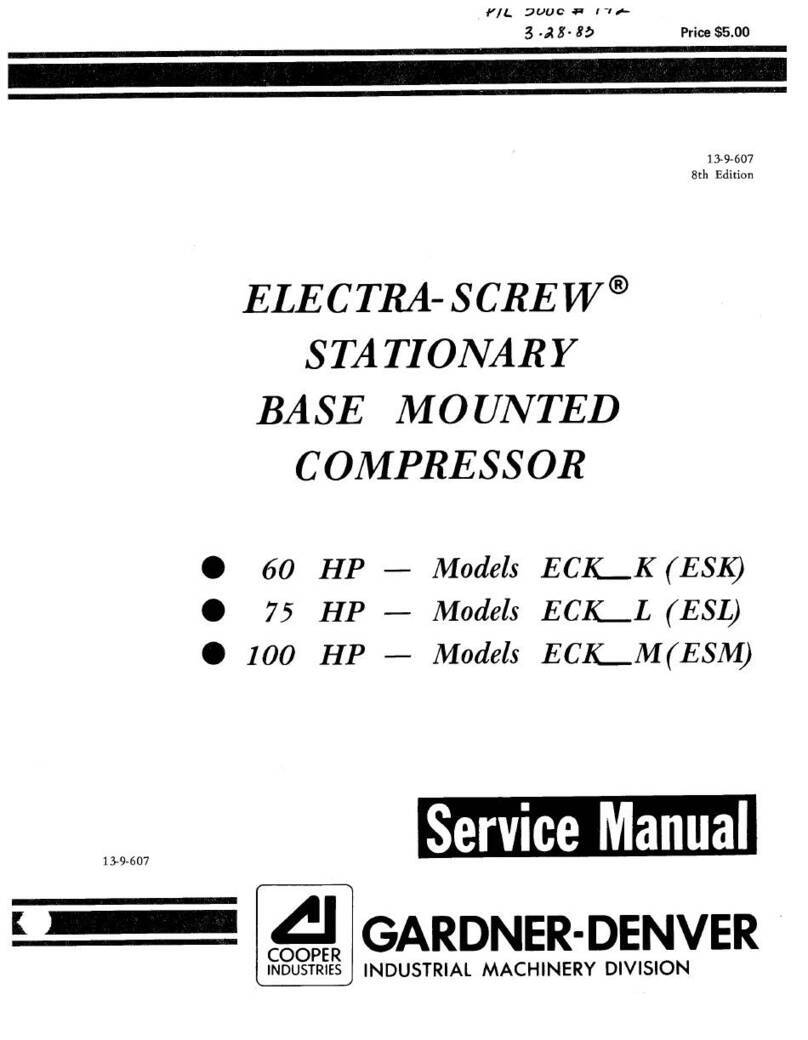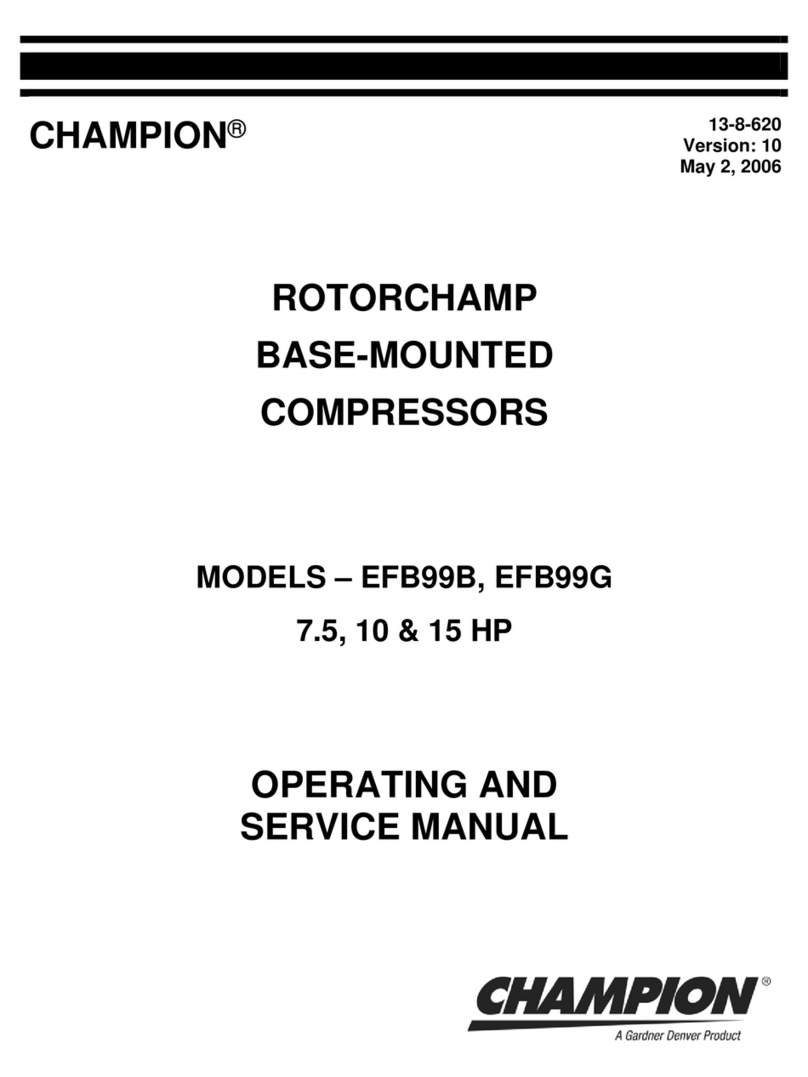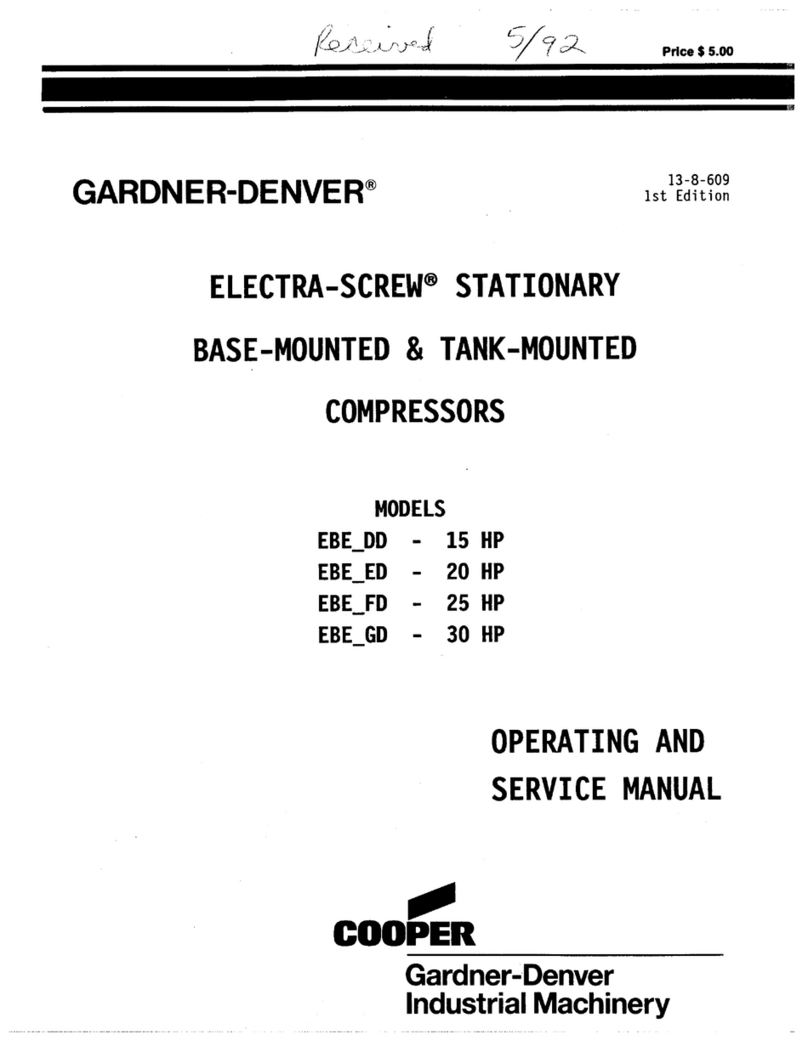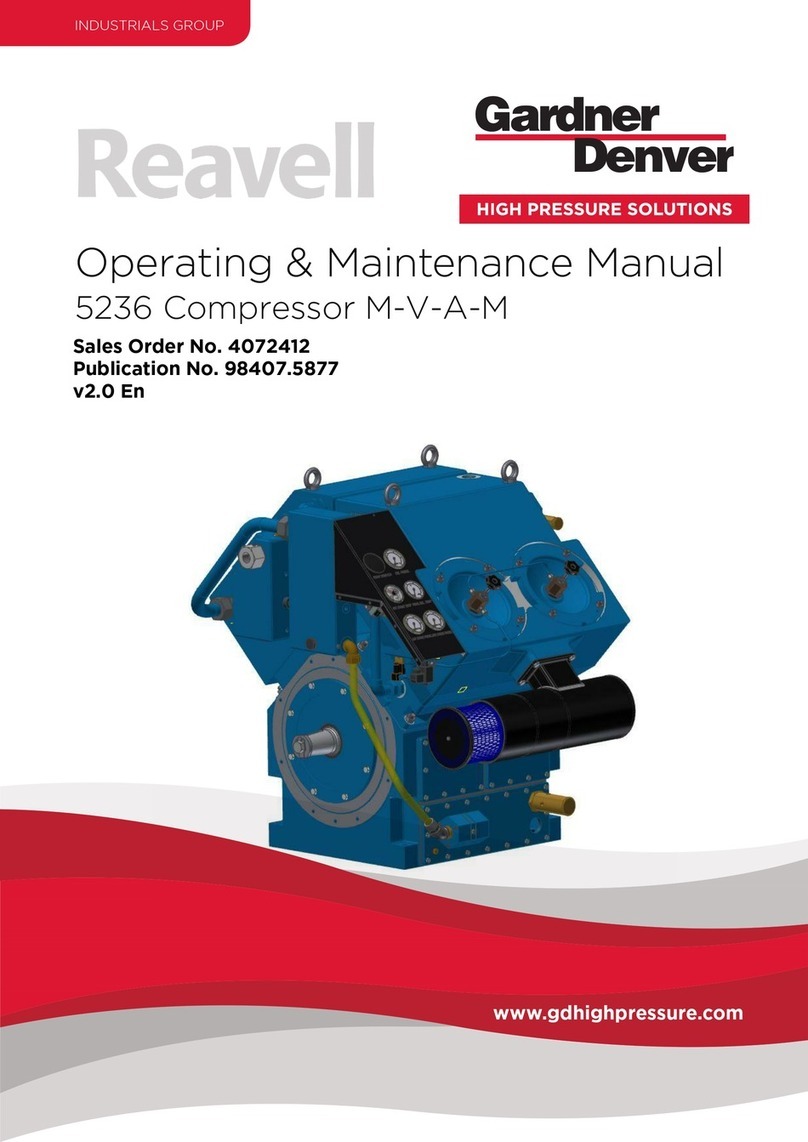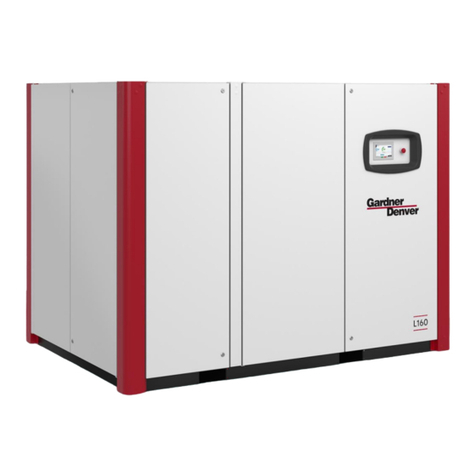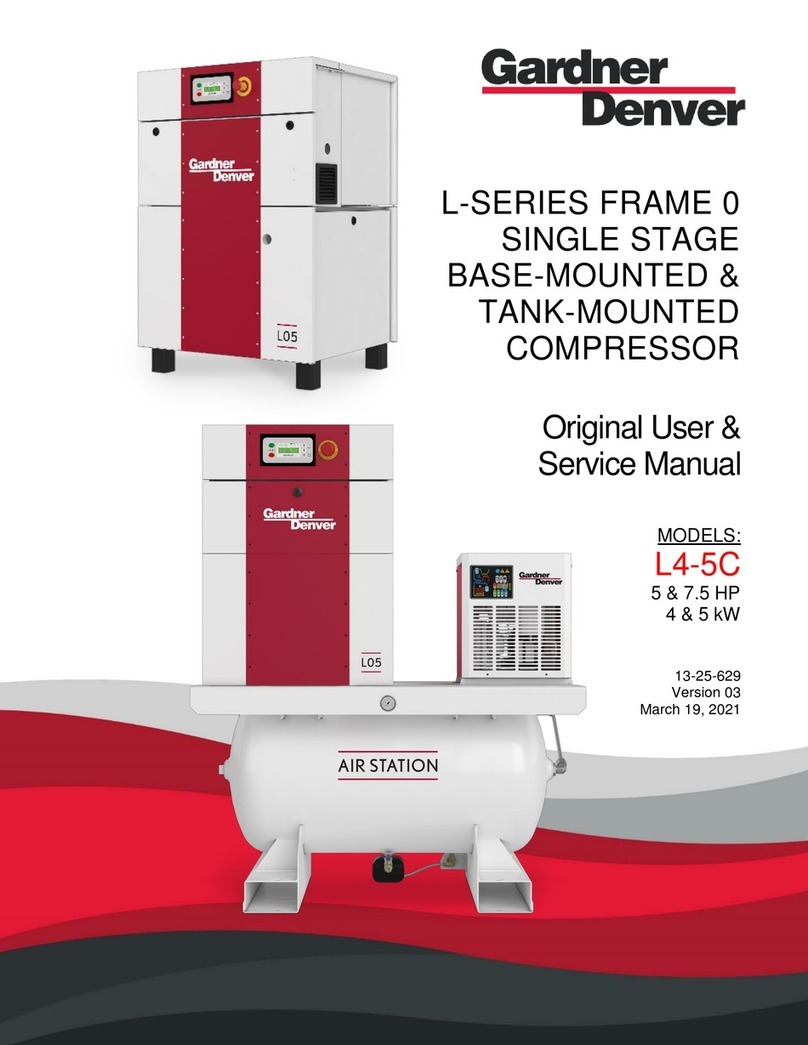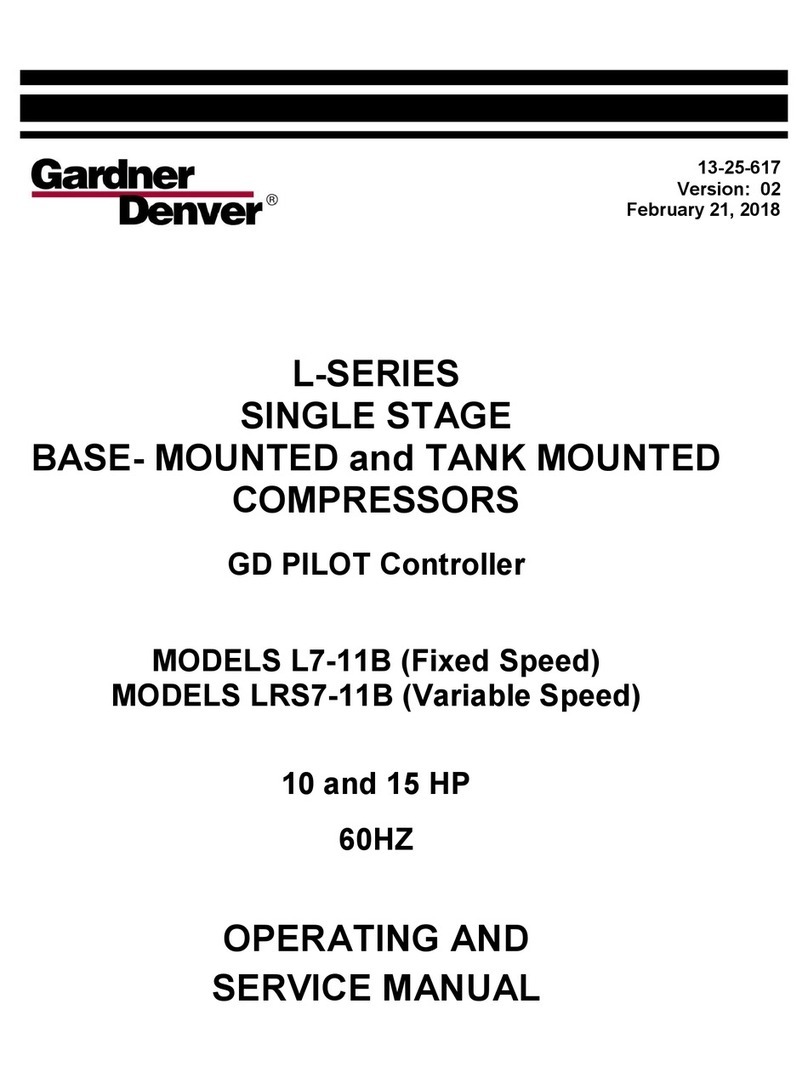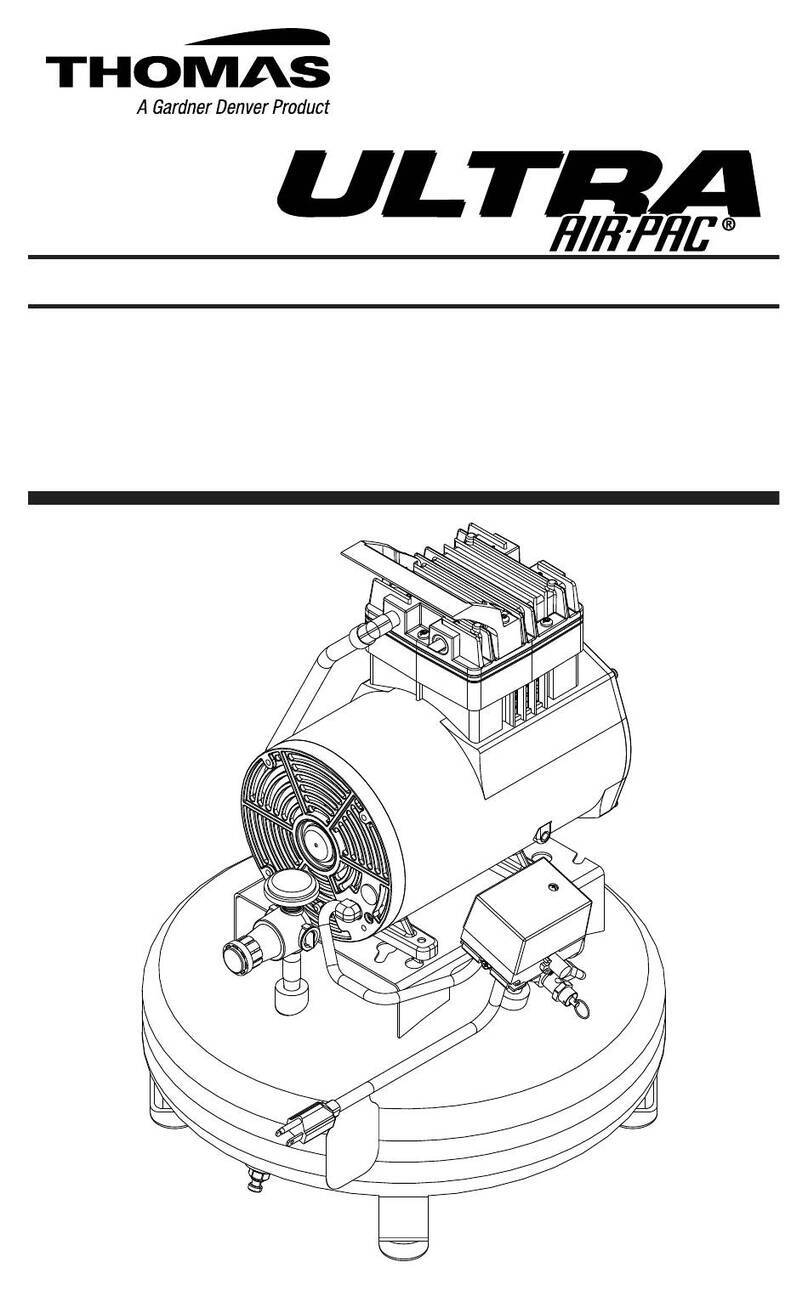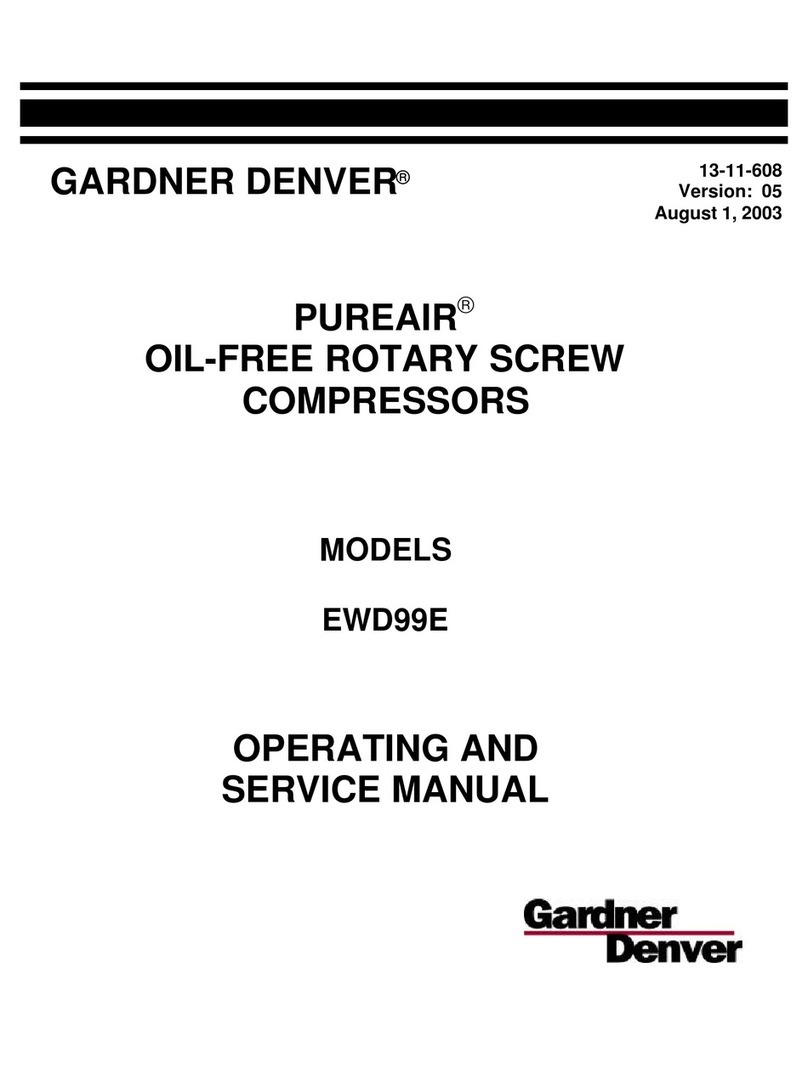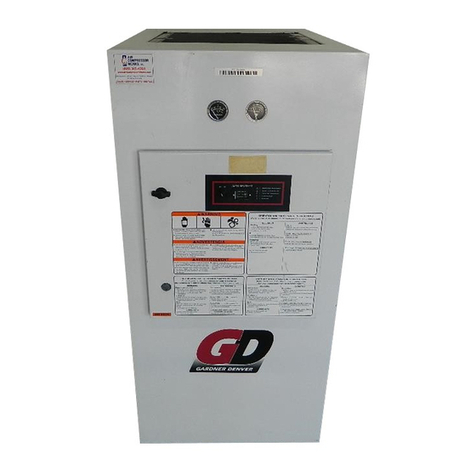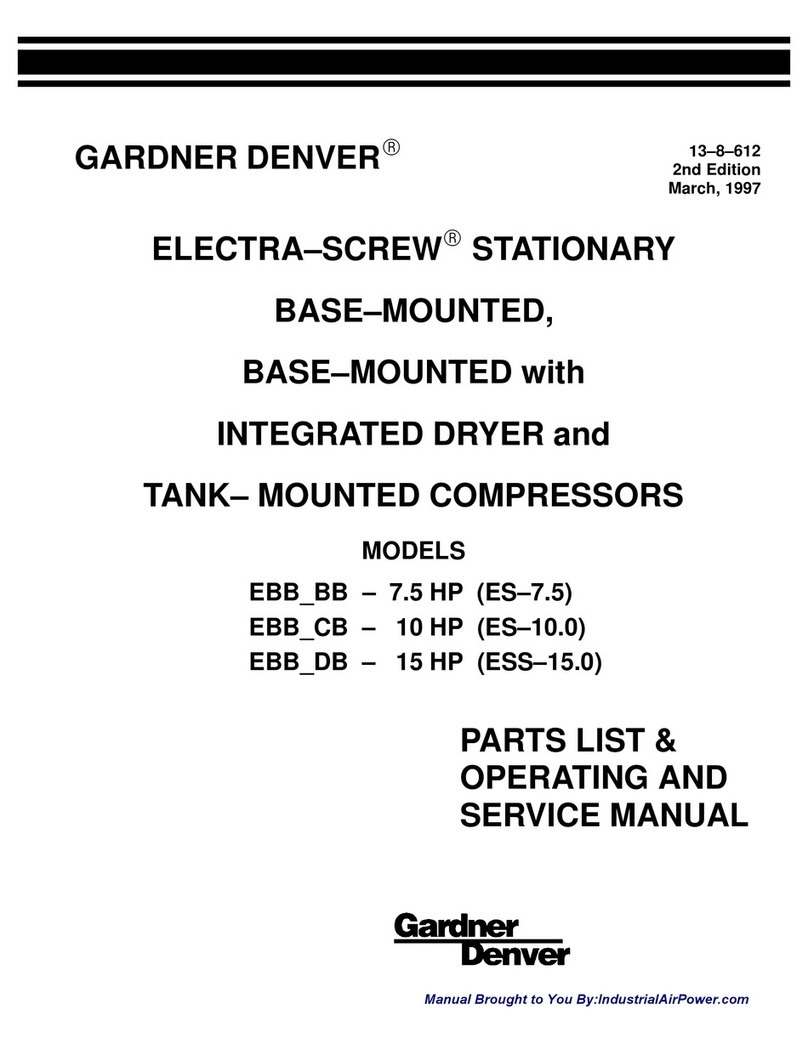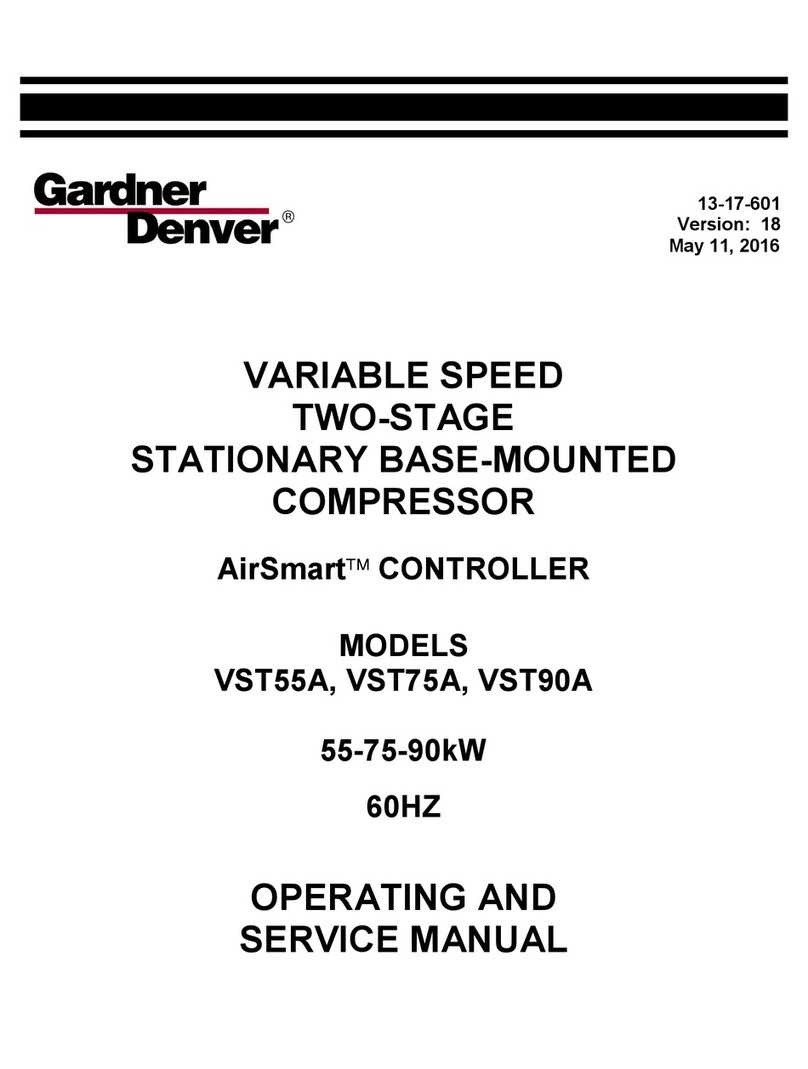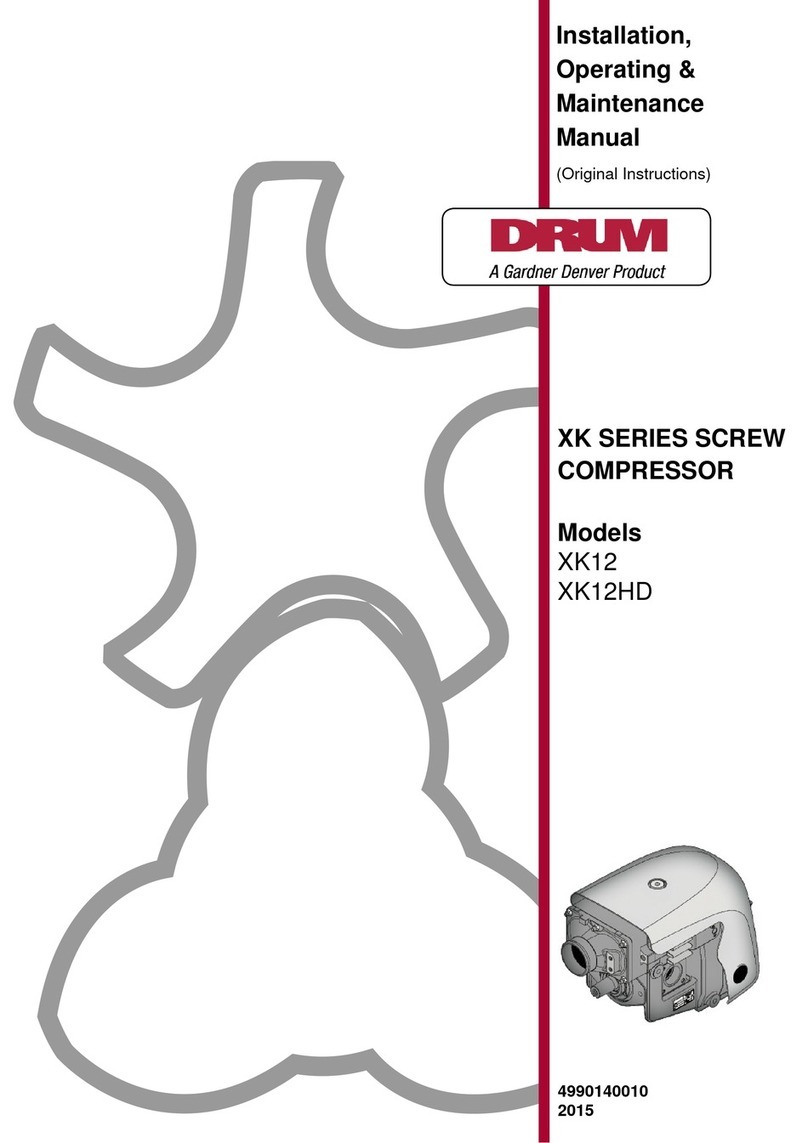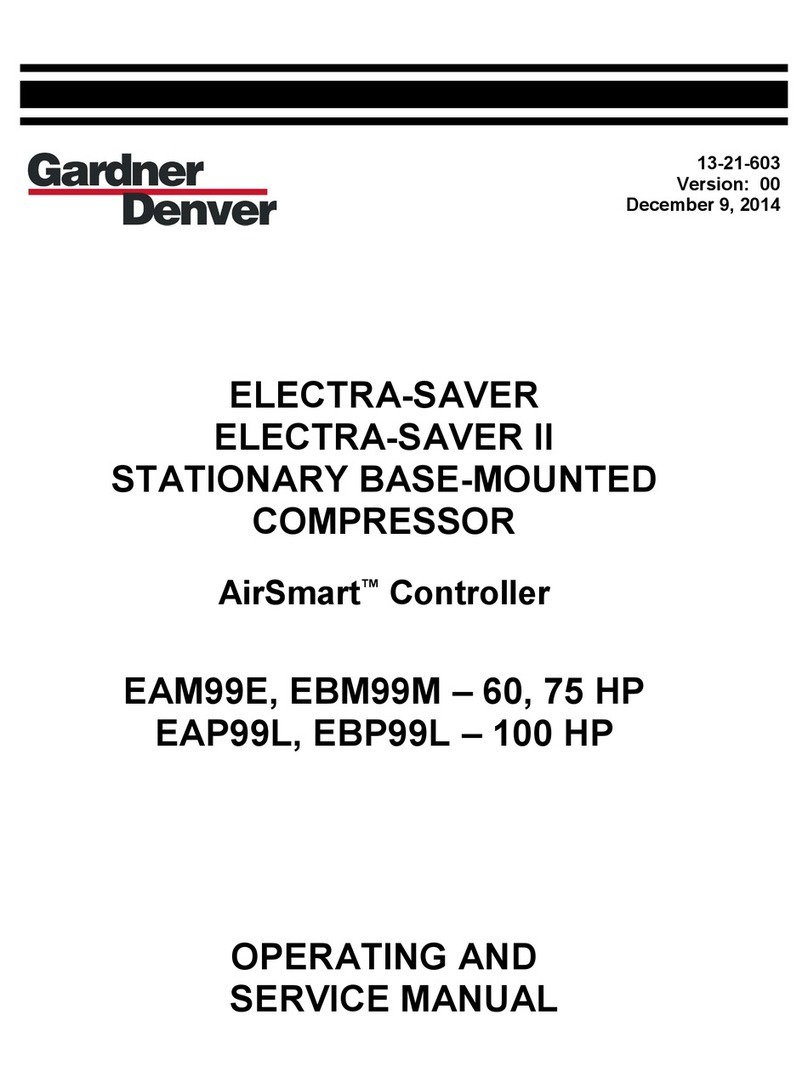
INDEX
13–13–600 Page iv
Actuator, Turn Valve 24. . . . . . . . . . . . . . . . . . . . . . .
Addition of Oil Between Changes 33. . . . . . . . . . . .
Aftercooler 11. . . . . . . . . . . . . . . . . . . . . . . . . . . . . . .
AIR FILTER, SECTION 6 42. . . . . . . . . . . . . . . . . . .
Air Filter Element Life 42. . . . . . . . . . . . . . . . . . . . . .
Air Filter Vacuum Switch 24. . . . . . . . . . . . . . . . . . .
Air Flow in the Compressor System 1. . . . . . . . . . .
Air Receiver, Auxiliary 11. . . . . . . . . . . . . . . . . . . . . .
Air–Cooled Oil Cooler Module 9. . . . . . . . . . . . . . . .
Ventilation 9. . . . . . . . . . . . . . . . . . . . . . . . . . . . . .
Auto Sentry Operation 20. . . . . . . . . . . . . . . . . . . . .
Blowdown Valve 22, 23. . . . . . . . . . . . . . . . . . . . . .
Change Procedure, Lubricant 33. . . . . . . . . . . . . . .
Check, Daily 19. . . . . . . . . . . . . . . . . . . . . . . . . . . . . .
Cleaning and Draining Oil System 34. . . . . . . . . . .
Cold Ambient Operation 33. . . . . . . . . . . . . . . . . . . .
Cold Weather Operation 13. . . . . . . . . . . . . . . . . . .
Cold Weather Operation, Installation for 12. . . . . .
Compression Principle 1. . . . . . . . . . . . . . . . . . . . . .
Compressor 1. . . . . . . . . . . . . . . . . . . . . . . . . . . . . . .
Compressor (GD Eliminator) Oil Separator 39. . .
Compressor Oil Cooler 36. . . . . . . . . . . . . . . . . . . . .
Compressor Oil Cooler – Water–Cooled Heat
Exchanger 38. . . . . . . . . . . . . . . . . . . . . . . . . . . .
Compressor Oil Filter 35. . . . . . . . . . . . . . . . . . . . . .
Compressor Oil System 30. . . . . . . . . . . . . . . . . . . .
Compressor Oil System Check 41. . . . . . . . . . . . . .
Control Devices 20. . . . . . . . . . . . . . . . . . . . . . . . . . .
Control Transformer 25. . . . . . . . . . . . . . . . . . . . . . .
Controller 20. . . . . . . . . . . . . . . . . . . . . . . . . . . . . . . .
CONTROLS & INSTRUMENTS, SECTION 4 20.
Controls & Instruments, General Description 20. .
Cooler, Compressor Oil 36. . . . . . . . . . . . . . . . . . . .
Cooling, Sealing and Lubrication 1. . . . . . . . . . . . .
COUPLING, SECTION 7 44. . . . . . . . . . . . . . . . . . .
Coupling 44. . . . . . . . . . . . . . . . . . . . . . . . . . . . . . . . .
Alignment 44. . . . . . . . . . . . . . . . . . . . . . . . . . . . .
Individual Cushion Design 44. . . . . . . . . . . . . . .
Daily Check 19. . . . . . . . . . . . . . . . . . . . . . . . . . . . . .
Decals 6, 7. . . . . . . . . . . . . . . . . . . . . . . . . . . . . . . . . .
Discharge Service Line 13. . . . . . . . . . . . . . . . . . . .
Discharge Thermistor 24. . . . . . . . . . . . . . . . . . . . . .
Drain, Oil Reservoir 9. . . . . . . . . . . . . . . . . . . . . . . . .
Draining and Cleaning Oil System 34. . . . . . . . . . .
Electric Motor Grease Recommendations 17. . . .
Electric Motor Regreasing Interval 17. . . . . . . . . . .
Electrical Wiring 15. . . . . . . . . . . . . . . . . . . . . . . . . . .
Element Life, Air Filter 42. . . . . . . . . . . . . . . . . . . . .
Emergency Stop Push–Button 24. . . . . . . . . . . . . .
Enclosure 9. . . . . . . . . . . . . . . . . . . . . . . . . . . . . . . . .
Fan Starter 25. . . . . . . . . . . . . . . . . . . . . . . . . . . . . . .
Filling Oil Reservoir 35. . . . . . . . . . . . . . . . . . . . . . . .
Filter, Compressor Oil 35. . . . . . . . . . . . . . . . . . . . . .
Filter Element 42. . . . . . . . . . . . . . . . . . . . . . . . . . . . .
Filter, Heavy Duty Air (Standard) 42. . . . . . . . . . . .
Foundation 9. . . . . . . . . . . . . . . . . . . . . . . . . . . . . . . .
Gauge, Oil Level 22, 34. . . . . . . . . . . . . . . . . . . . . .
GENERAL INFORMATION, SECTION 1 1. . . . . .
Grease Recommendations, Electric Motor 17. . . .
Grounding 16. . . . . . . . . . . . . . . . . . . . . . . . . . . . . . . .
High Temperature Operation 30. . . . . . . . . . . . . . . .
Inlet Line 13. . . . . . . . . . . . . . . . . . . . . . . . . . . . . . . . .
Inlet Screen and Tube 43. . . . . . . . . . . . . . . . . . . . .
Inlet Valve 22. . . . . . . . . . . . . . . . . . . . . . . . . . . . . . . .
INSTALLATION, SECTION 2 8. . . . . . . . . . . . . . . .
Installation, General 8. . . . . . . . . . . . . . . . . . . . . . . .
Installation for Cold Weather Operation 12. . . . . .
Lifting Unit 8. . . . . . . . . . . . . . . . . . . . . . . . . . . . . . . . .
Line, Discharge Service 13. . . . . . . . . . . . . . . . . . . .
Line, Inlet 13. . . . . . . . . . . . . . . . . . . . . . . . . . . . . . . .
Location 8. . . . . . . . . . . . . . . . . . . . . . . . . . . . . . . . . .
Low Oil Pressure Protection 9. . . . . . . . . . . . . . . . .
Lubricant, Recommended 30. . . . . . . . . . . . . . . . . .
